This guide provides essential techniques and procedures for evaluating multi-engine aircraft performance, ensuring safety, and optimizing flight test outcomes for pilots and inspectors․
1․1 Purpose of the Guide
This guide is designed to provide a comprehensive framework for conducting multi-engine flight tests, ensuring a standardized approach to evaluating aircraft performance, safety, and handling characteristics․ Its primary objective is to assist pilots, instructors, and aviation inspectors in understanding the methodologies and criteria for assessing multi-engine aircraft․ The guide outlines essential procedures for pre-flight preparation, flight test execution, and post-flight analysis, ensuring consistency and accuracy in test results․ It also emphasizes safety protocols and best practices to mitigate risks during testing․ By following this guide, users can ensure compliance with regulatory requirements and achieve reliable outcomes in flight test evaluations․ The guide serves as a reference for training programs, certification processes, and ongoing professional development in multi-engine aviation․
1․2 Key Concepts in Multi-Engine Testing
Multi-engine flight testing involves several critical concepts that ensure safe and effective evaluation of aircraft performance․ Asymmetrical thrust and engine failure handling are central, as they simulate real-world scenarios where one engine may fail․ Propeller pitch control and fuel management strategies are also vital, as they impact aircraft stability and range․ Understanding aerodynamic characteristics, such as p-factor and torque, is essential for maintaining control during various flight regimes․ Additionally, crew resource management plays a key role in ensuring clear communication and decision-making during tests․ Data collection and analysis are fundamental, providing insights into performance metrics like speed, climb rate, and fuel efficiency․ These concepts collectively form the foundation for conducting thorough and reliable multi-engine flight tests, ensuring both safety and accuracy in evaluating aircraft capabilities․
1․3 Safety Considerations
Safety is paramount in multi-engine flight testing, requiring meticulous planning and adherence to established protocols․ Pre-flight inspections and system checks are critical to ensure all components function correctly․ Pilots must be trained to handle asymmetric thrust scenarios and engine failures, which are common focuses of testing․ Emergency procedures, such as go-around maneuvers and system malfunctions, must be rehearsed to ensure quick and effective responses․ Crew resource management is vital, emphasizing clear communication and decision-making under pressure․ Weather conditions, air traffic, and aircraft performance limits must also be carefully evaluated to minimize risks․ Additionally, test areas should be selected to allow safe recovery in case of unexpected issues․ By prioritizing safety, testers can ensure the integrity of the evaluation process while protecting both personnel and equipment․ Adherence to these considerations is non-negotiable in achieving successful and incident-free flight tests․
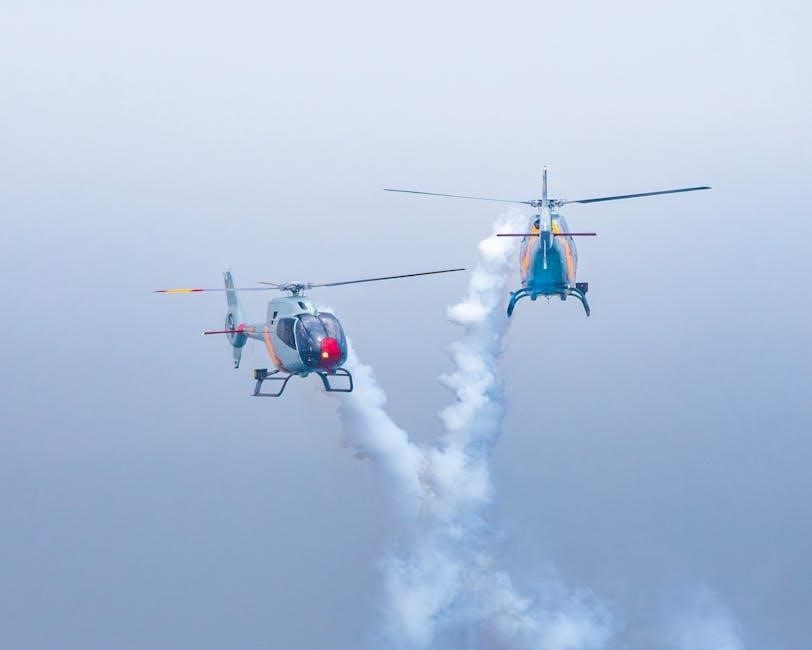
Pre-Flight Preparation
Thorough aircraft inspection, weight and balance calculations, fuel management, and weather analysis are critical steps to ensure readiness for multi-engine flight tests and optimal performance evaluation․
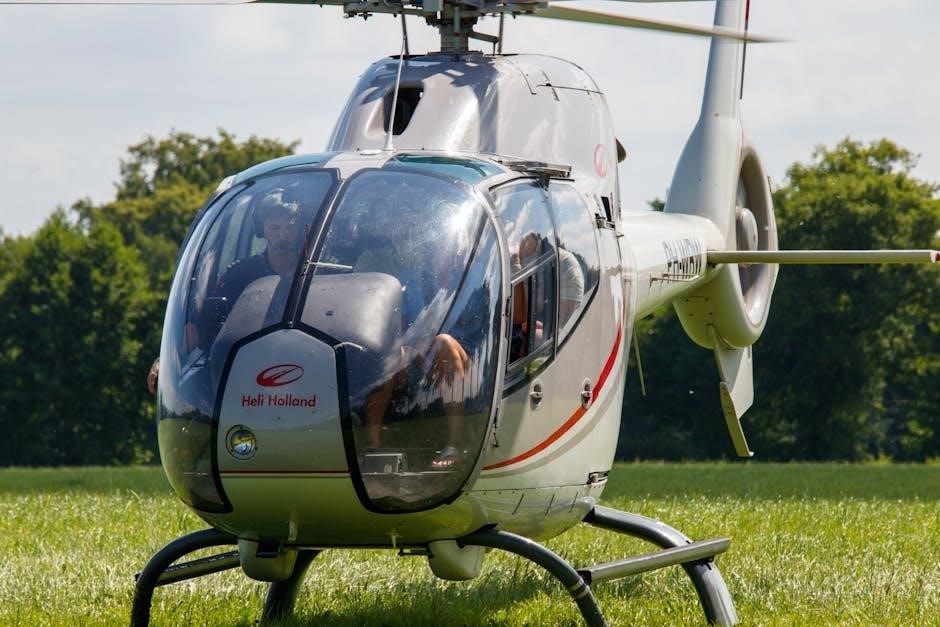
2․1 Aircraft Inspection Checklist
A comprehensive aircraft inspection is vital for multi-engine flight testing․ Start with a visual examination of the exterior, checking for damage, fluid leaks, or obstruction in air intakes․ Ensure all control surfaces are properly secured and functioning․ Inspect tires, brakes, and landing gear for wear or damage․ In the cockpit, verify that all instruments, including altimeters, airspeed indicators, and engine gauges, are operational․ Test communication and navigation systems, and ensure emergency equipment like fire extinguishers and first aid kits are on board․ Check fuel levels and quality, ensuring no contaminants are present․ Review maintenance logs to confirm compliance with recent servicing requirements․ Finally, conduct a ground test of engine performance, monitoring for unusual vibrations or noises․ This systematic approach ensures the aircraft is airworthy and ready for rigorous testing․
2․2 Weight and Balance Calculations
Accurate weight and balance calculations are critical for ensuring the safety and performance of multi-engine aircraft during flight testing․ Start by gathering the aircraft’s basic specifications, including its empty weight and maximum takeoff weight, from the manufacturer’s data․ Calculate the total weight by adding the weight of fuel, passengers, cargo, and any test equipment․ Next, determine the center of gravity (CG) by distributing these weights across the aircraft’s length․ Compare the calculated CG with the allowable limits provided in the aircraft’s flight manual․ If the CG exceeds these limits, adjust the load distribution or reduce weight as necessary․ Proper weight and balance ensure optimal aircraft handling, stability, and compliance with safety standards․ Document all calculations for post-flight analysis and regulatory compliance․
2․3 Fuel Management Strategies
Fuel management is a critical aspect of pre-flight preparation for multi-engine aircraft․ Begin by planning the fuel load based on the flight test objectives, ensuring sufficient reserves for unexpected scenarios․ Monitor fuel consumption rates during flight to maintain optimal performance and avoid overburning․ Use fuel flow indicators to track real-time usage and adjust power settings as needed․ Proper fuel distribution between tanks is essential to maintain balance and prevent uneven fuel depletion․ Always adhere to the aircraft’s fuel management checklist to ensure compliance with safety protocols․ Additionally, consider environmental factors like wind and temperature that may affect fuel efficiency․ By implementing effective fuel management strategies, pilots can enhance safety, reduce operational costs, and ensure the success of flight test missions․ Accurate fuel planning and monitoring are key to achieving these goals․
2․4 Weather Considerations
Weather conditions play a pivotal role in multi-engine flight testing, necessitating meticulous planning and real-time monitoring․ To gather precise weather data, employ advanced search techniques such as Boolean operators and specific keywords like “meteorological reports” or “NOAA databases․” Utilize site-specific searches to access detailed forecasts from trusted sources․ For instance, using quotation marks around “wind speed” and “temperature” can yield targeted results․ Exclude irrelevant data with terms like “-rain” to focus on clear weather parameters․ Real-time tools, such as wind maps and radar imagery, can be efficiently located using these strategies․ By integrating these search methods into your weather planning, you ensure informed decision-making for optimal flight test conditions․ Effective weather monitoring enhances safety and operational efficiency, making it a cornerstone of successful multi-engine flight testing․
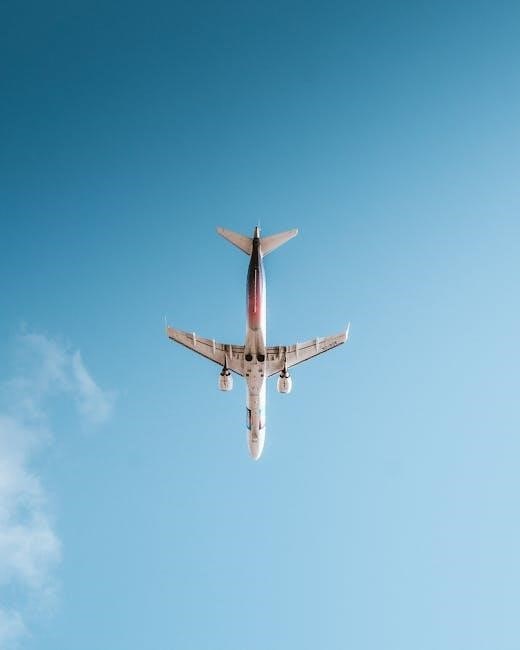
Flight Test Procedures
This section outlines standardized methods for conducting multi-engine flight tests, ensuring safety, performance evaluation, and data accuracy․ Advanced search techniques optimize effective test procedures and outcomes․
3․1 Takeoff and Climb Performance
Evaluating takeoff and climb performance is critical in multi-engine flight testing․ This phase assesses the aircraft’s ability to safely depart and ascend under various conditions, including single-engine and all-engines-operating scenarios․ Key objectives include measuring acceleration, lift-off speed, and climb rate to ensure compliance with certification standards․ Pilots must adhere to standardized procedures, using detailed checklists to monitor engine performance, control settings, and system responses․ Data collection during these maneuvers helps identify potential issues, such as uneven thrust or control surface malfunctions․ Weather conditions, aircraft weight, and altitude significantly impact performance, requiring precise adjustments and careful documentation․ By analyzing these factors, testers can optimize the aircraft’s takeoff and climb capabilities, ensuring both safety and efficiency․ This phase is foundational for validating the aircraft’s overall flight characteristics and operational readiness․
3․2 Cruise Performance Evaluation
Cruise performance evaluation assesses the aircraft’s efficiency and stability during steady flight conditions․ This phase focuses on measuring fuel consumption, engine performance, and overall handling at various altitudes and speeds․ Pilots conduct tests at different power settings to determine optimal cruise configurations, ensuring compliance with design specifications․ Key metrics include fuel flow, RPM, and temperature monitoring across both engines․ Additionally, testers evaluate the aircraft’s ability to maintain altitude and airspeed with one engine inoperative, simulating real-world operational scenarios․ Weather conditions and aircraft weight are critical factors that influence performance, necessitating precise data collection and analysis․ By examining these variables, testers can identify trends and optimize the aircraft’s cruise capabilities, ensuring efficient and reliable operation․ This evaluation is vital for validating the aircraft’s long-range flight characteristics and operational effectiveness in diverse environments․
3․3 Landing and Approach Performance
Landing and approach performance evaluation focuses on assessing the aircraft’s stability, control, and responsiveness during descent and landing phases․ This includes testing single-engine approaches, go-around procedures, and the aircraft’s ability to maintain desired airspeed and altitude․ Evaluators also examine the handling characteristics under various weather conditions, such as crosswinds or low visibility, to ensure safe operation․ The use of standardized checklists and crew resource management techniques is emphasized to enhance situational awareness and decision-making․ Additionally, the evaluation includes assessing landing distance accuracy and comparing it to manufacturer specifications; By conducting these tests, inspectors can identify potential issues and ensure compliance with safety standards, ultimately validating the aircraft’s performance during critical phases of flight․

3․4 Go-Around Procedures

Go-around procedures are critical for ensuring safety when a landing cannot be safely completed․ This maneuver involves transitioning from an approach to a climb, often due to unfavorable conditions or system malfunctions․ In multi-engine aircraft, go-around procedures must be executed smoothly to maintain control and prevent engine over-pitch or compressor stall․ Pilots should advance power on both engines, configure flaps and landing gear appropriately, and maintain optimal airspeed․ Evaluators assess the aircraft’s responsiveness, climb performance, and handling characteristics during the go-around․ Proper crew communication and adherence to checklist procedures are essential to avoid errors․ The aircraft’s ability to recover and re-establish a stable climb is a key performance indicator․ This phase also evaluates how well the aircraft handles asymmetric power conditions, ensuring safe continuation of flight․ Effective go-around techniques are vital for minimizing risks and ensuring operational safety․
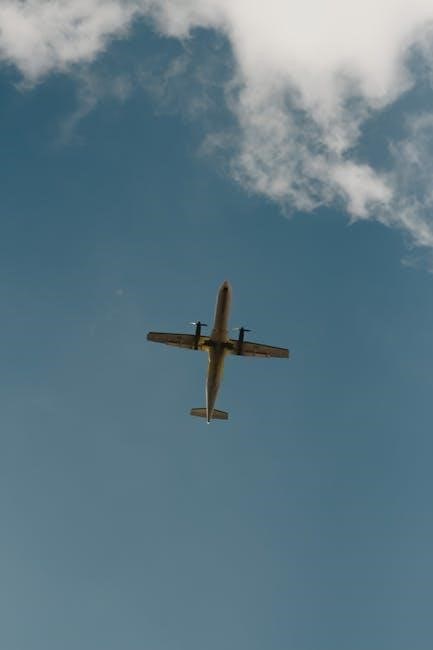
Emergency Procedures
Emergency procedures outline critical actions for handling unexpected situations, ensuring crew safety and aircraft control during malfunctions, system failures, or adverse conditions in multi-engine flight testing scenarios․
4․1 Engine Failure Handling
Engine failure handling is a critical aspect of multi-engine flight testing, requiring immediate and precise actions to ensure safety and maintain aircraft control․ Pilots must first assess the severity of the failure and communicate clearly with the crew․ The failed engine should be isolated, and power settings on the remaining engines adjusted to compensate for the loss of thrust․ Crew resource management is essential to manage workload and prioritize tasks effectively․ Feathering the propeller of the failed engine minimizes drag and helps maintain directional control․ Pilots should navigate to a safe location for an emergency landing if necessary․ Continuous training and simulation exercises are vital to prepare for such scenarios, ensuring quick and effective decision-making under pressure․ Proper documentation of the incident and subsequent maintenance checks are also crucial for future safety and compliance․
4․2 System Malfunctions
System malfunctions during multi-engine flight testing require prompt identification and mitigation to ensure aircraft stability and crew safety․ Pilots must quickly assess the nature of the malfunction, whether it involves electrical, hydraulic, or pressurization systems, and prioritize corrective actions․ Effective communication between crew members is crucial to manage workload and implement solutions․ Checklists and quick reference handbooks (QRH) provide standardized procedures for addressing common malfunctions․ For example, an electrical system failure may necessitate switching to backup power sources, while a hydraulic malfunction could require manual activation of landing gear․ Crews should remain vigilant for cascading issues and be prepared to adapt their strategies․ Documentation of system malfunctions and subsequent actions is essential for post-flight analysis and regulatory compliance․ Continuous training on system redundancies and emergency protocols ensures preparedness for unexpected scenarios, minimizing risks and enhancing overall flight safety․
4․3 Crew Resource Management
Crew Resource Management (CRM) is essential for effective teamwork during multi-engine flight testing․ It emphasizes clear communication, decision-making, and workload management to enhance safety and efficiency․ Pilots and test engineers must maintain situational awareness, delegate tasks, and coordinate actions to address challenges promptly․ CRM fosters a collaborative environment, ensuring that all team members contribute their expertise․ Regular training in CRM principles helps to reduce errors, improve problem-solving, and strengthen leadership․ By promoting open communication and mutual respect, CRM minimizes the risk of miscommunication and ensures that the crew operates cohesively, even under pressure․ This approach is critical for managing complex scenarios, such as system malfunctions or unexpected test outcomes, and ensures that the flight test objectives are met safely and effectively․
4․4 Emergency Landing Techniques
Emergency landing techniques are critical for safely managing unforeseen situations during multi-engine flight testing․ Pilots must remain calm and follow structured procedures to minimize risks․ Assessing the situation quickly is vital, ensuring the aircraft is configured for landing by securing engines, extending flaps, and lowering the landing gear․ Communication with air traffic control is essential to alert them of the emergency and receive guidance․ Selecting a suitable landing site, such as an open field or the nearest airstrip, is paramount․ The approach must be stabilized, maintaining proper glide path and airspeed․ Post touchdown, applying brakes carefully and securing the aircraft systems is necessary to prevent further incidents․ Regular training in these techniques enhances preparedness and ensures crew readiness for such critical scenarios․ Adherence to these protocols is fundamental for safeguarding lives and equipment during emergencies․ Effective execution of emergency landings relies on precision, composure, and thorough knowledge of procedures․
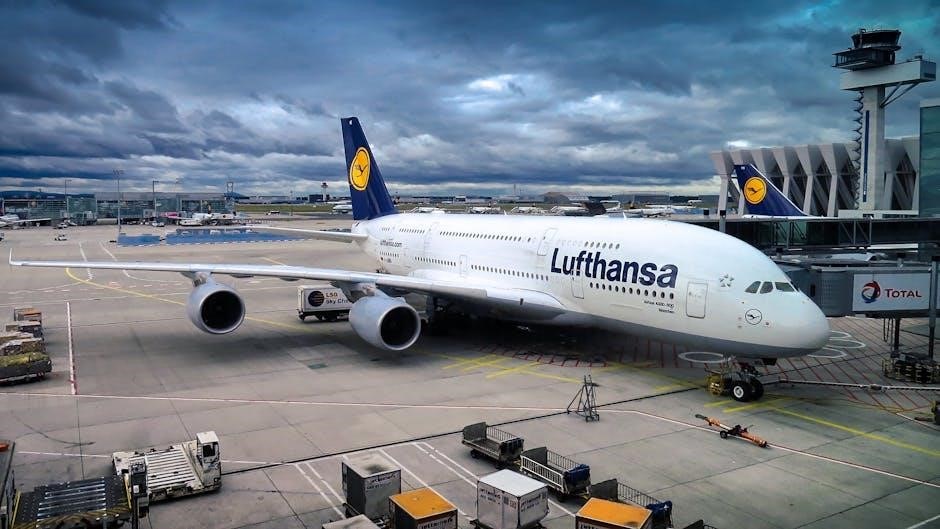
Regulatory Compliance
Adhering to regulatory standards ensures legal and safe conduct of multi-engine flight tests, requiring thorough documentation, certification compliance, and adherence to aviation authority guidelines․
5․1 Certification Requirements
Certification for multi-engine aircraft involves meeting stringent regulatory standards to ensure safety and performance․ Compliance with aviation authority guidelines is mandatory, requiring detailed documentation and inspection․ Airworthiness certificates must be obtained, verifying the aircraft’s design and operational readiness․ Test plans and results must align with specified criteria, including performance metrics and safety protocols․ Regulatory bodies, such as the Civil Aviation Authority (CAA), oversee the certification process, ensuring adherence to industry norms․ Proper documentation, including test reports and data analysis, is critical for approval․ Failure to meet these requirements can result in certification denial, delaying operational readiness․ Regular inspections and updates are necessary to maintain compliance, ensuring ongoing safety and legal operation of multi-engine aircraft․
5․2 Test Reporting and Documentation
Accurate and detailed test reporting is crucial for multi-engine flight testing․ Documentation must include all flight test procedures, results, and analyses, ensuring compliance with aviation standards․ Test reports should detail aircraft performance metrics, safety assessments, and any anomalies encountered․ Proper documentation involves recording flight data, system responses, and crew actions, using tools like flight data recorders and logs․ Reports must be reviewed and validated by authorized personnel to ensure accuracy and reliability․ Traceability and accessibility of records are essential for future reference, audits, or further testing․ Standardized formats and templates should be used to maintain consistency and readability․ Compliance with regulatory requirements is non-negotiable, as these documents serve as legal and operational references․ Effective documentation practices ensure transparency, accountability, and the integrity of the flight testing process․ All records must be securely archived for long-term access and compliance purposes․ This ensures that flight test outcomes remain verifiable and actionable․
5․3 Record Maintenance
Proper maintenance of flight test records is essential for compliance, safety, and future reference․ All test data, reports, and documentation must be securely stored in both physical and digital formats to prevent loss or damage․ Digital records should be backed up regularly using reliable systems to ensure accessibility․ Records must be organized chronologically and by aircraft or test type for easy retrieval․ Compliance with regulatory retention periods is mandatory, with some records requiring long-term or permanent storage․ Access to records should be restricted to authorized personnel to maintain confidentiality and integrity․ Regular audits should be conducted to verify the accuracy and completeness of maintained records․ Proper record maintenance supports accountability, traceability, and continuous improvement in flight testing, ensuring that historical data remains available for analysis and regulatory oversight․
This guide successfully outlines multi-engine flight testing processes, emphasizing safety, performance, and emergency preparedness․ Future advancements in aviation technology will continue to shape and improve these critical procedures․
6․1 Summary of Key Points
This guide provides a comprehensive overview of multi-engine flight testing, emphasizing safety, performance evaluation, and emergency preparedness․ It outlines pre-flight procedures, including aircraft inspection, weight and balance calculations, and fuel management․ Flight test procedures cover takeoff, cruise, and landing performance, as well as go-around techniques․ Emergency protocols, such as engine failure handling and system malfunctions, are detailed to ensure pilot readiness․ Regulatory compliance, including certification requirements and test documentation, is highlighted as critical for adherence․ The guide also underscores the importance of crew resource management and continuous improvement in flight testing․ By following these guidelines, pilots and inspectors can ensure safe and effective multi-engine aircraft operations, adapting to future trends in aviation technology and testing methodologies․
6․2 Continuous Improvement in Flight Testing
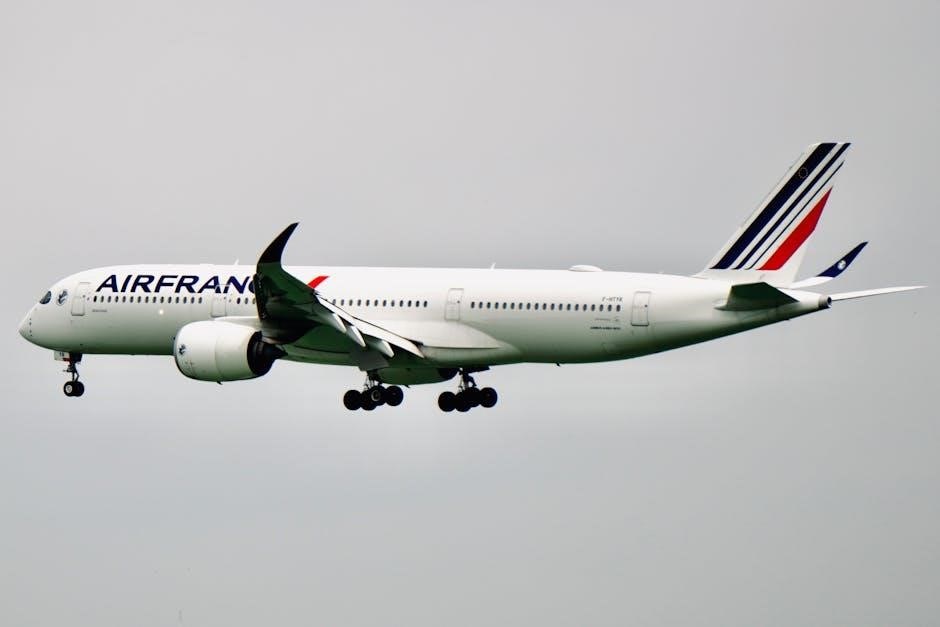
Continuous improvement in multi-engine flight testing involves ongoing refinement of procedures, technologies, and training to enhance safety and efficiency․ By leveraging feedback from test results, pilots and examiners can identify areas for enhancement, ensuring adherence to evolving aviation standards․ Investing in advanced simulation tools and data analysis software can streamline test processes and improve accuracy․ Regular training updates and workshops for pilots and inspectors are crucial to maintain proficiency and adapt to new technologies․ Additionally, fostering a culture of collaboration between test teams and regulatory bodies promotes shared learning and best practices․ Continuous improvement also involves integrating emerging trends, such as autonomous systems and sustainable aviation technologies, into testing protocols․ This proactive approach ensures that multi-engine flight testing remains robust, relevant, and aligned with industry advancements, ultimately contributing to safer and more efficient aircraft operations․
6․3 Future Trends in Multi-Engine Aviation
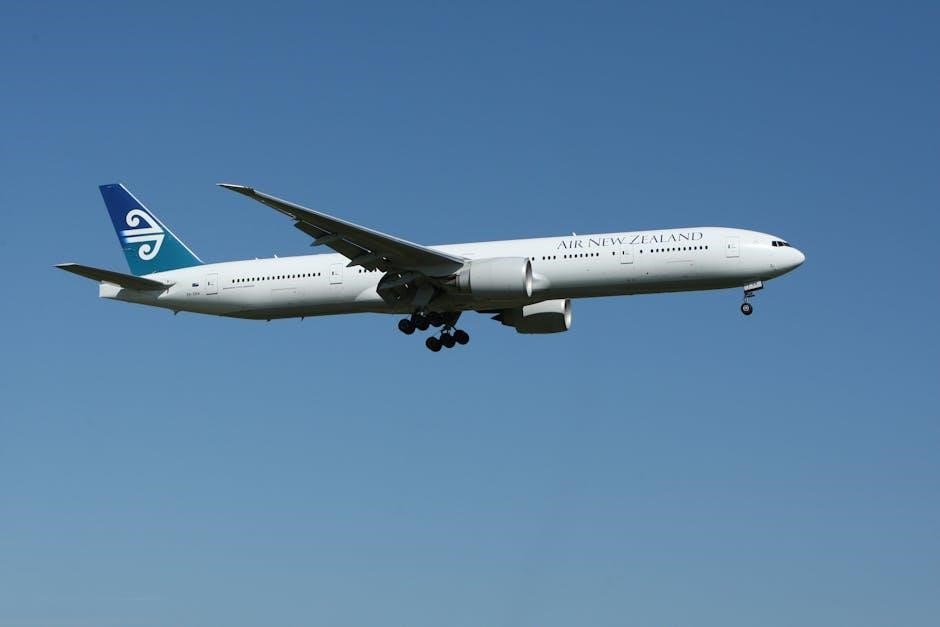
Multi-engine aviation is poised for significant advancements, driven by technological innovation and sustainability goals․ Hybrid-electric propulsion systems are emerging as a promising solution to reduce emissions and operating costs, while improving fuel efficiency․ Autonomous flight technologies, including AI-driven systems, are expected to enhance safety and reduce pilot workload․ The integration of advanced materials and next-generation engine designs will further optimize performance and durability․ Additionally, the adoption of real-time data analytics and predictive maintenance will revolutionize flight test procedures, enabling more accurate assessments and reducing downtime․ As the industry evolves, a focus on sustainable aviation fuels and noise reduction technologies will play a critical role in meeting environmental regulations․ These trends underscore the importance of adaptability and innovation in shaping the future of multi-engine aviation, ensuring it remains safe, efficient, and environmentally responsible․

